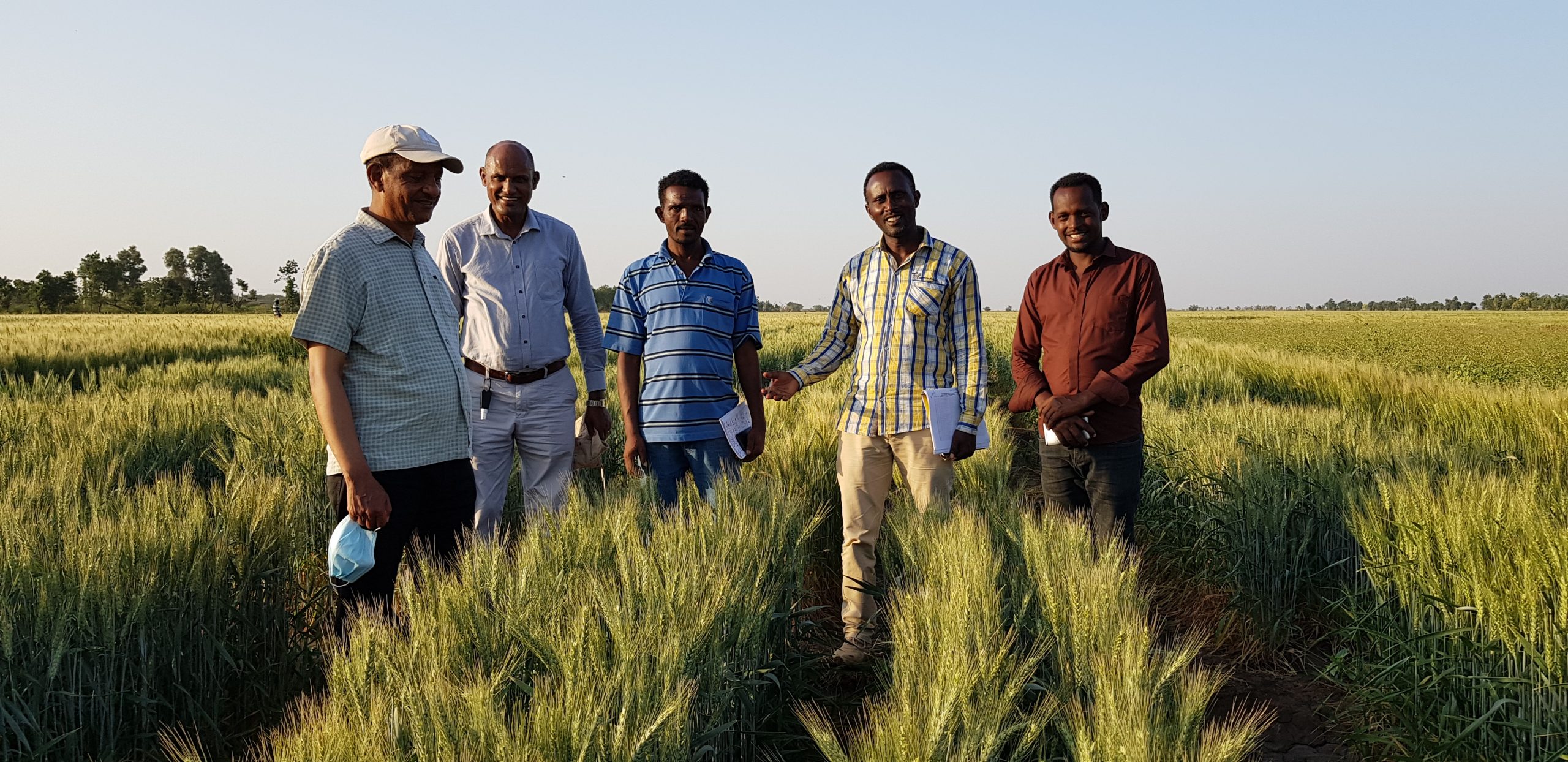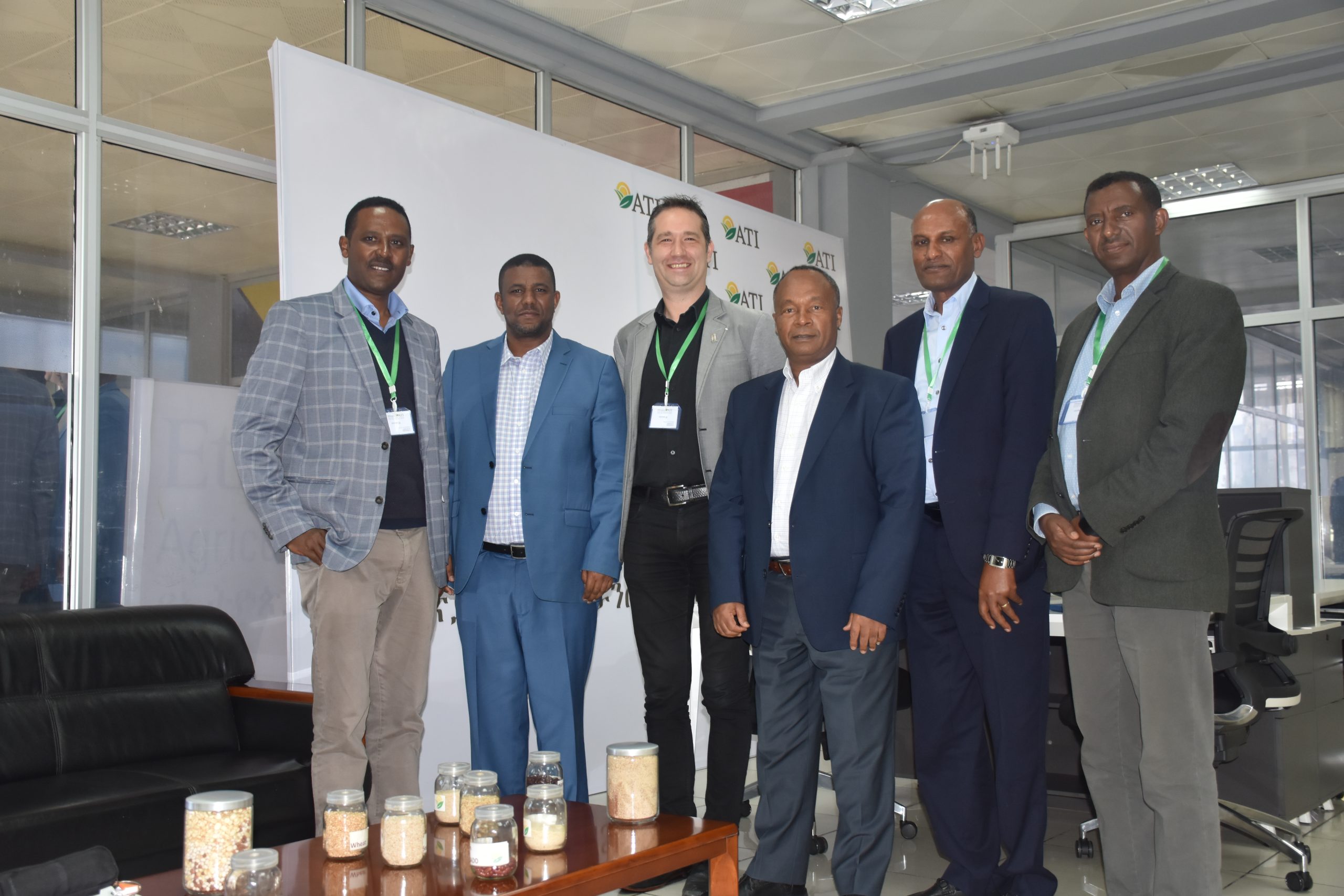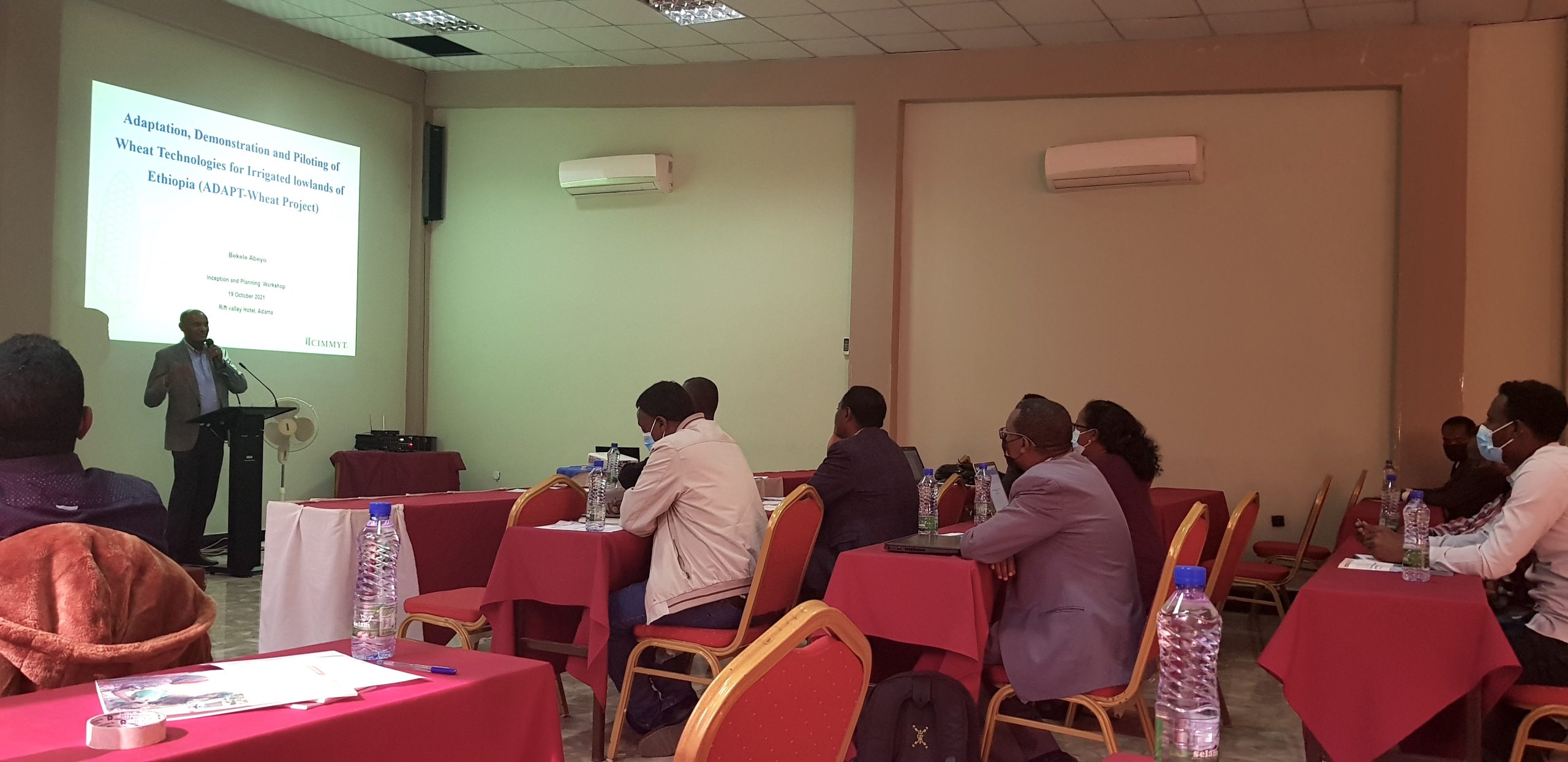Wheat is the second most important staple crop in Ethiopia and a major pillar for food security. Based on fingerprinting analysis from 2018, about 87% of all wheat varieties grown in Ethiopia are CIMMYT-derived.
Domestic wheat production and productivity has nearly doubled over the past 15 years, due to improved farmer access to better varieties, agronomic practice recommendations and conducive marketing and supply chain policies. Nevertheless, due to population growth, higher incomes and accelerated urbanization, the demand for wheat in Ethiopia is increasing faster than productivity, with the demand for an additional 1.5 million tons of wheat per year satisfied through imports.
In 2018, the Government of Ethiopia set a policy to achieve wheat national self-sufficiency by 2023. Additional production would come primarily from the irrigated lowlands of the Awash valley, in the Afar and Oromia regions, where the current cotton mono-culture would be converted to a cotton-wheat rotation.
Preliminary yield trials conducted by Werer Agricultural Research Center and based on experiences in Sudan where climate conditions are similar, on-farm wheat grain yields of 4 tons per hectare can be achieved. The potential area for irrigated wheat-cotton is at present around 500,000 hectares, which, when fully implemented, has the potential to make Ethiopia self-sufficient for wheat production.
The challenges to develop the current lowland into productive farming systems are significant and include identifying high yielding, early maturing, heat-tolerant, rust-resistant wheat varieties with appropriate end-use quality.
Appropriate mechanization will be required to allow farmers to facilitate rapid preparation of fields for wheat sowing after harvesting cotton, as well as for mechanized harvesting. Tested packages of agronomic and land management practices will be needed to optimize the production systems while mitigating against soil salinization.
In coordination with the national research and extension systems, this project will evaluate and pilot wheat technologies and packages of practices to reach 1,000 smallholders and medium commercial farmers in the Awash valley, and enable them to use these technologies and practices on 10,000 hectares of irrigated land in the first year, following the conclusion of this project.
Objectives
- Capacity of research and development practitioners working on irrigated lowland wheat developed.
- Improved wheat elite lines evaluated, and pre-release seed multiplication initiated of variety candidates.
- Tested package of agronomic practices are ready for scaling.
- Demonstration and piloting of appropriate machineries (modern mechanization) for irrigated wheat production.


 Climate adaptation and mitigation
Climate adaptation and mitigation 

